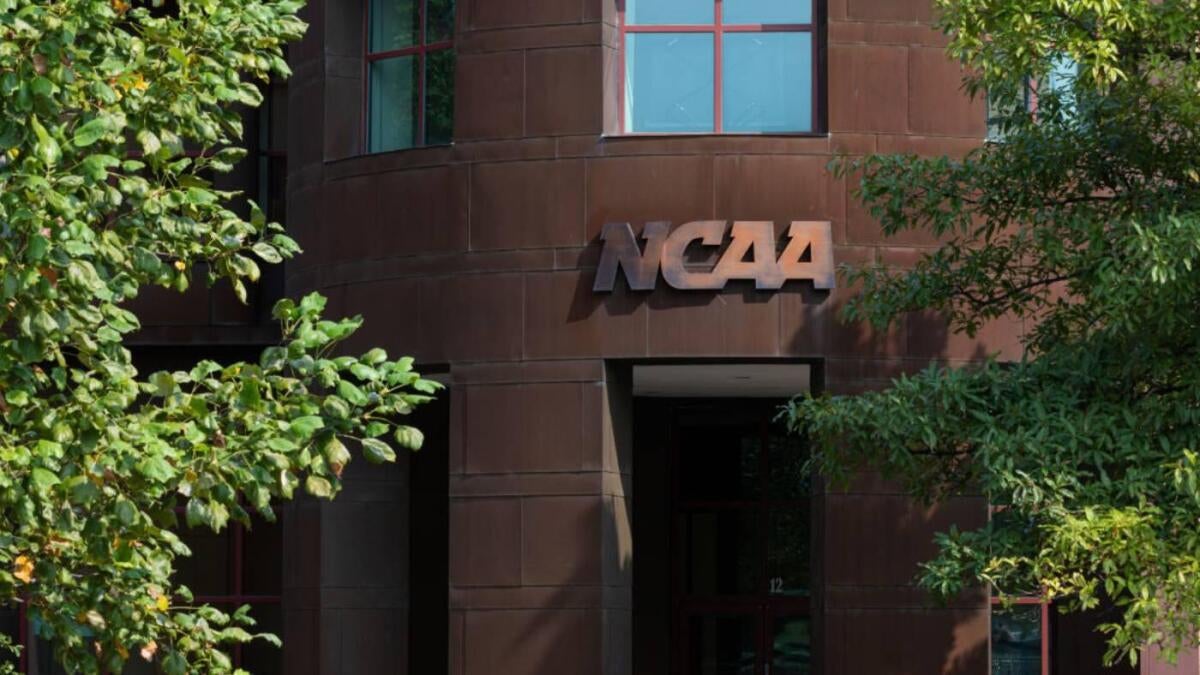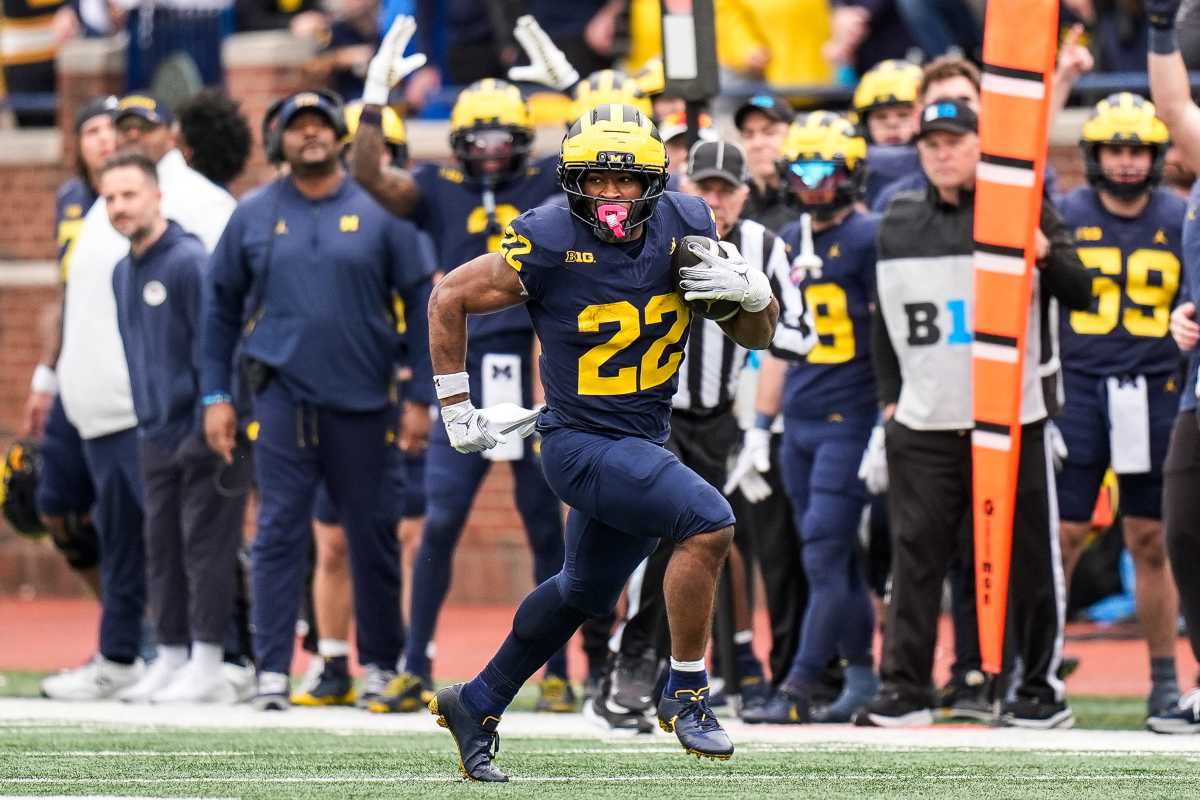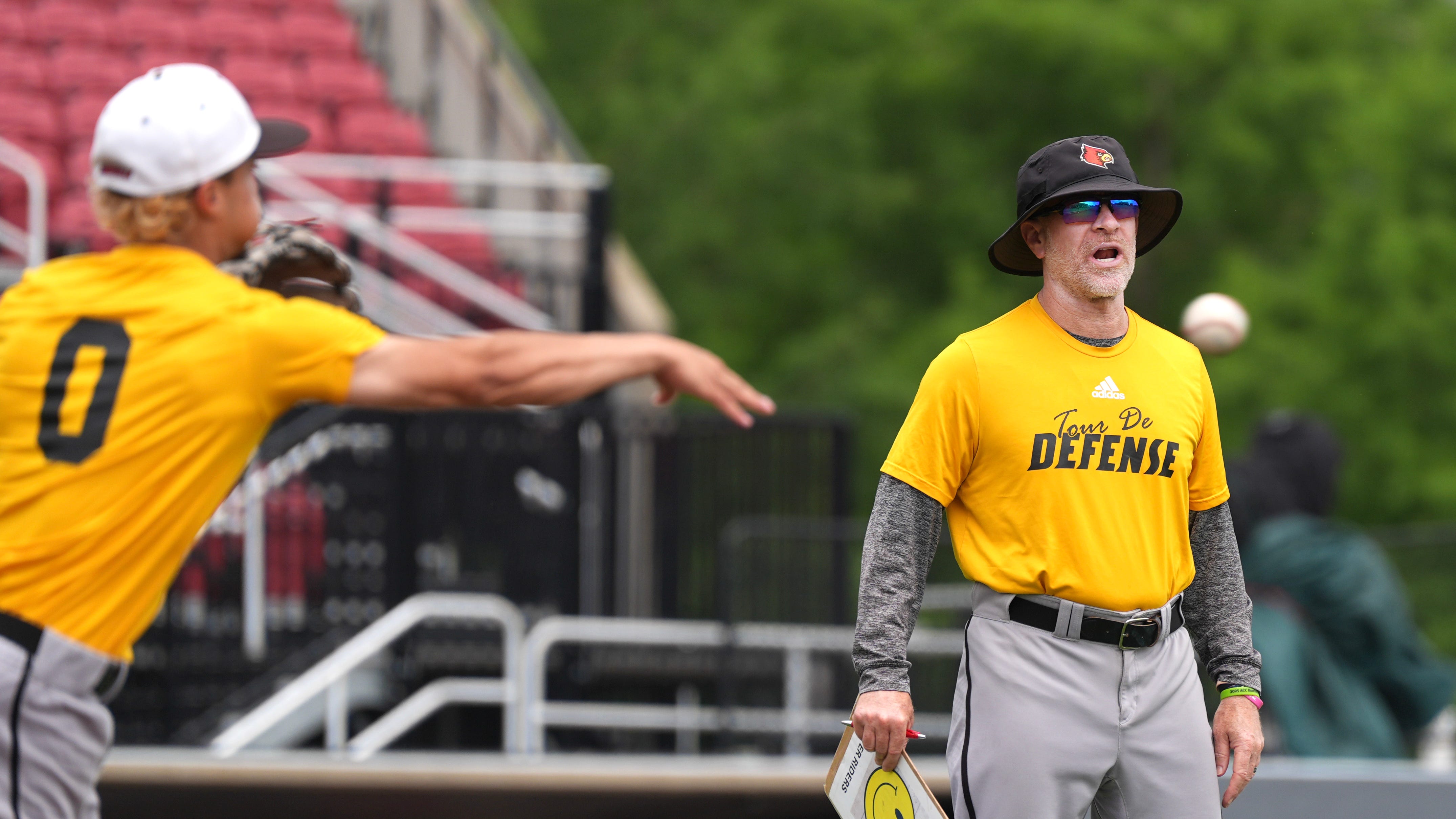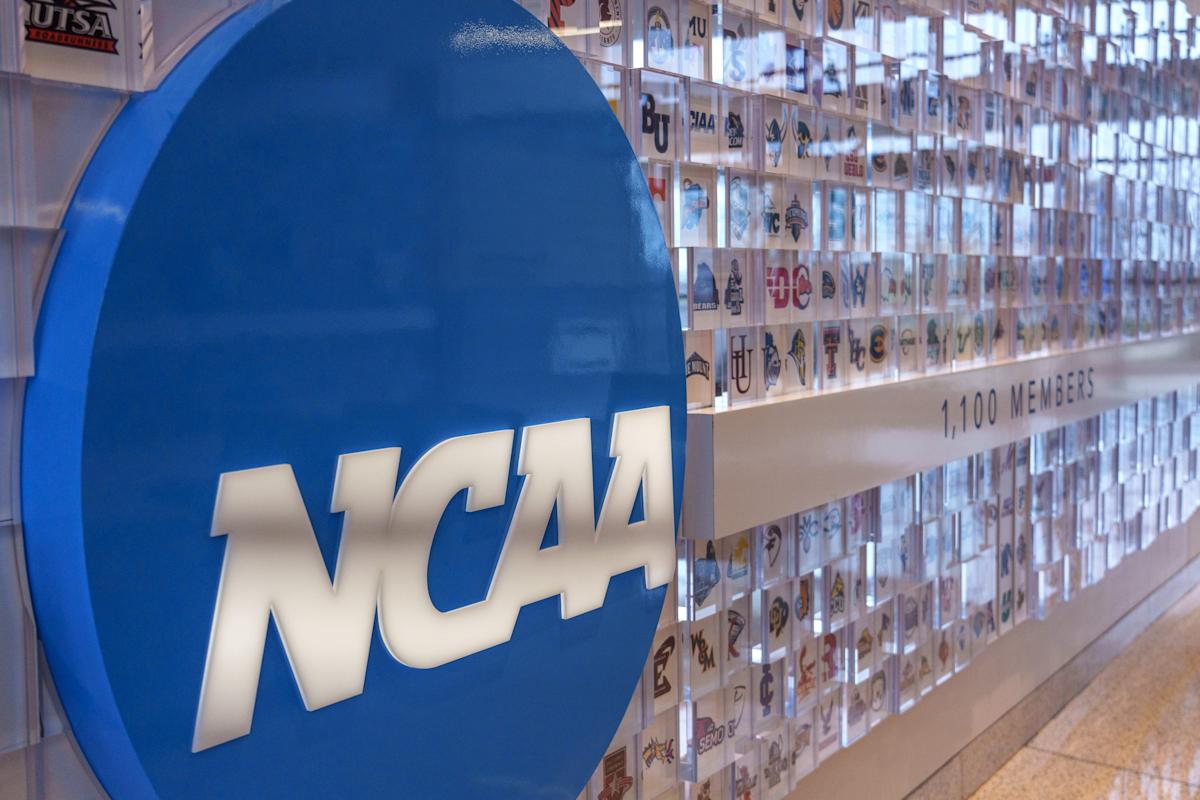NIL
$2.8 billion House v. NCAA settlement hangs in balance as attorneys file brief to address roster-limit concern
The marathon legal battle regarding player compensation and the makeup of college athletics in a landmark, multibillion-dollar antitrust case may have finally hit the homestretch Wednesday night. Attorneys involved in a $2.8 billion settlement filed a brief tweaking the aspect of roster limits in the House v. NCAA settlement, which they hope will convince a […]

The marathon legal battle regarding player compensation and the makeup of college athletics in a landmark, multibillion-dollar antitrust case may have finally hit the homestretch Wednesday night.
Attorneys involved in a $2.8 billion settlement filed a brief tweaking the aspect of roster limits in the House v. NCAA settlement, which they hope will convince a federal judge to grant final approval. The judge twice voiced concerns over proposed roster limits, a small but significant aspect of the deal that will enable schools to pay athletes a portion of their media revenues, capped at $20.5 million, starting July 1.
Schools will be allowed — but not required — to reinstate players who were cut from rosters during the 2024-25 academic year without those players counting against new roster limits set to be implemented July 1. Purged players exempt from roster limits can also transfer to new schools.
The key language in the brief, however, is that roster-limit exceptions are to be made at a school’s discretion. It remains to be seen if the brief will satisfy Judge Claudia Wilken of the Northern District of California, who specifically asked attorneys to “grandfather” all players into the deal, after twice delaying a decision on whether to approve the settlement in April.
“In other words, there are no guarantees that designated student-athletes will get or maintain roster spots,” the NCAA and power conference’s counsel wrote in a supplemental brief Wednesday. “But that does not adversely affect any injunctive relief class member.”
High school seniors who were promised scholarships that were later rescinded because of the proposed roster limits will also be exempt.
Now, college athletics waits – again – for a decision from federal court. Wilken gave preliminary approval in October, speaking in favor of most aspects of the deal. However, she has twice delayed final approval because of language tied to roster limits, which could lead to an estimated 5,000 players being cut from sports across the NCAA.
Several objectors testified April 7 against replacing scholarship limits with roster limits at a settlement hearing in the District Court of Northern California. In a brief filed April 23, Wilken ordered attorneys to develop a plan to “grandfather” current players into the agreement, allowing schools to temporarily exceed new limits as part of a phase-in solution for rosters. A two-week negotiation ensued.
If Wilken is not satisfied with the parties’ resolution and declines final approval, the case may advance to trial, a daunting prospect for the NCAA, which has been bludgeoned legally over student-athlete compensation and lambasted by the Supreme Court over the last five years. If the NCAA and power conferences lose in trial, the parties could be liable for $20 billion in damages.
If the settlement is not approved, schools may soon turn to their state governments to help legalize direct pay to players, who have planned to be paid a share of the $20.5 million pool next fall.
Wilken’s request on April 23 to renegotiate aspects of roster limits sent shockwaves across the country, complicating matters for many schools that had already begun cutting players from rosters. Under the preliminary settlement released in October, football rosters were set to shrink to 105 players, meaning as many as 30-plus players would be cut at each school. Even before the judge’s final approval, schools began to cut players in the spring in preparation for the settlement’s implementation on July 1.
Putting the toothpaste back in the tube could prove difficult for athletic departments. Some purged players landed at new schools, but many remain without a home, hoping to land again at their former schools. Most schools might be unwilling to re-sign players and spend extra scholarship money – as well as room and board, meals and health care – that balloon already-tight budgets.
In a brief filed April 23, Wilken was unmoved by the schools’ plight, writing that “any disruption that may occur is a problem of Defendants’ and NCAA members schools’ own making.”
The settlement’s touchstones remain uncchanged. Starting July 1, NCAA schools can share as much as $20.5 million in revenue with their athletes, and former athletes who played between 2016 and 2024 will be paid $2.8 billion in back payments if the settlement is approved.
Each school’s revenue-sharing cap will increase 4% each year during the 10-year agreement.
What is House v. NCAA?
The class-action antitrust lawsuit was filed in 2020 by Arizona State swimmer Grant House and women’s college basketball player Sedona Prince seeking an injunction against the NCAA and the Power Five conferences. It sought to lift restrictions on revenue sharing of media rights revenues.
Powerful antitrust attorneys Steve Berman and Jeffrey Kessler represented the plaintiffs.
If approved by the judge, the settlement would resolve three antitrust lawsuits: Carter v. NCAA, House v. NCAA and Hubbard v. NCAA.
What’s next?
A decision: Judge Claudia WIlken will study the brief and decide whether to grant final approval to the House v. NCAA settlement, which was first introduced in October and has included months of negotiations.
Revenue-sharing formula: Many schools are preparing to mirror the back-payment formula in their revenue-sharing model for the future. That means roughly 75% of future revenue will be shared with football players, 15% to men’s basketball, 5% to women’s basketball and 5% to all remaining sports. Those numbers will differ from school to school, but most power programs have shared similar models with administrators.
CBS Sports has learned one school is preparing to share more than 85% of the $20.5 million pool with football players – a reflection of the percentage of annual revenue the sport generates for its athletics department.
More lawsuits: Concerns over Title IX and antitrust issues will continue after the settlement is approved. However, instead of the NCAA being the target, individual schools may soon become the focus of litigation. Each school will split the revenue pie based on its own formulas, meaning a women’s basketball player may sue a school if they believe they are not receiving their fair share of cash. The same can be said for a football player if their revenue share is lower than that of a rival player at another school.
The White House is set to weigh in: The NCAA has long lobbied Congress to pass legislation protecting the organization and its members from antitrust litigation. Now the White House has zeroed in on college athletics.
President Donald Trump is creating a presidential commission on college athletics to find solutions for “issues ailing the ecosystem,” according to Yahoo! Sports. Trump was considering an executive order to regulate NIL after meeting with former Alabama coach Nick Saban, according to the Wall Street Journal. Sen. Tommy Tuberville, the former Auburn coach, also met with Trump last week to discuss college athletics. Steve Berman, a lead attorney for the plaintiffs in the House case, criticized the president’s potential actions, saying that an executive order would lead to more lawsuits.
Sen. Ted Cruz is reportedly drafting a bill that could offer the NCAA limited antitrust protection. It’s not clear how Trump’s plans may affect Cruz’s draft.
New enforcement model: The power conferences are expected to launch soon the College Sports Commission, an enforcement arm to police the settlement among its schools. The new organization effectively replaces the NCAA regarding NIL enforcement, and will monitor NIL deals between players and third parties, and oversee revenue-sharing practices at schools. This new organization will also penalize schools and individuals who break rules.
Who is footing the bill? The NCAA is responsible for 40% of the $2.8 billion settlement, and the remaining 60% will come from reducing its revenue distributions to the 32 Division I conferences over the next 10 years ($1.6 billion). The NCAA is utilizing a formula based on revenue distribution presented to each league over a nine-year period starting in 2016, which leans heavily on basketball units tied to NCAA Tournament participation, according to Yahoo Sports. The Power Five conferences – ACC, Big Ten, Big 12, Pac-12 and SEC – will pay 24% of the overall damages, followed by the Group of Five at 10%.The FCS is on the hook for 14% and non-football conferences in Division I will pay 12% of the overall agreement, according to documents reviewed by CBS Sports.
House v. NCAA settlement terms
- $20.5 million salary cap for revenue-sharing at each Division I school (starting July 1)
- $2.77 billion in back payments to as many as 390,000 athletes who played an NCAA sport between 2016 and 2024.
- Outside NIL deals of more than $600 must be vetted by a third-party clearinghouse
- NIL deals must meet “fair market value.” How that fair-market value is determined is the subject of intense debate.
- Unlimited scholarships with new roster size limits
- At least 88,104 of approximately 390,000 athletes have filed back-pay claims, plaintiff attorney Steve Berman said in April. That number was expected to reach 118,879 at the end of April.
- 343 athletes opted out of the settlement
NIL
Franklin addresses CFP in media session | News, Sports, Jobs
UNIVERSITY PARK — The College Football Playoffs are evolving even faster than NIL and the transfer portal. It seems inevitable that the field will expand to 16 teams, possibly as soon as the 2026 season. The management committee for the CFP recently modified the seeding where the top four conference champions will not necessarily receive […]

UNIVERSITY PARK — The College Football Playoffs are evolving even faster than NIL and the transfer portal. It seems inevitable that the field will expand to 16 teams, possibly as soon as the 2026 season.
The management committee for the CFP recently modified the seeding where the top four conference champions will not necessarily receive a bye, but will go to the top four teams.
Now, the discussion has changed to how are the teams picked and should the committee start using a formula such as what was used in the BCS era from 1998-2013.
Count Penn State coach James Franklin as part of the crowd that is undecided.
“There were all these complaints about the BCS,” Franklin said. “Then we go to (the CFP), and the problem is everyone voting is biased, whether you want to be or not. In a lot of ways, you could make the argument that a formula could be better, but we didn’t love the formula, so we went to this.”
Ohio State coach Ryan Day made the argument earlier this week that the Big Ten should have four automatic qualifiers to the playoffs. Part of the reasoning is because the conference expanded to 18 teams last season, with the four West Coast teams being some of the predominant teams that the PAC-12 featured for many years.
“It’s an interesting discussion,” Franklin said of the four automatic qualifiers. “Somebody said, ‘Let’s just choose the best 16.’ Well, how do you choose the best 16?
“It’s why I think we need a commissioner. The majority of people that have strong opinions have an agenda and are biased based on what’s good for them.
“We do have more teams now and a greater level of competition. Why should (the field makeup) be balanced? I think that’s the conversation everyone is having.”
It’s an ongoing conversation that likely won’t have an end game until at least next year, if not longer. Franklin pointed out that the Big Ten only plays nine conference games, while the SEC only plays eight in league play. That only scratches the surface of the whole dilemma.
“At the end of the day there’s not going to be a perfect system,” Franklin said. But let’s make it as perfect as we can so we can compare an apple to an apple.”
A brand new room
The leading wide receiver from last year’s Nittany Lions returning is Liam Clifford, who managed to get just 286 yards on 18 catches. First Team All-American tight end Tyler Warren was a first-round NFL Draft pick, while Harrison Wallace III and Omari Evans transferred to Ole Miss and Washington, respectively.
But the wideouts were revamped over the winter with USC’s Kyron Hudson and Troy’s Devonte Ross committing to Penn State via the transfer portal. On the day of the Blue-White Game, it was also reported that Syracuse’s Trebor Pena was also coming to State College.
Pena had 84 receptions for 941 yards and nine touchdowns last season for the Orange.
“It worked out pretty well,” Franklin said. “Since he’s been here, I know our veteran players like him. Hudson has come here and been a good fit and the guys really like him. Hudson and Pena were both captains at their schools. That’s very telling.”
What has the rest of the coaching staff noticed about Pena since he’s been on campus?
“He’s got tremendous ball skills,” offensive coordinator Andy Kotelnicki said. “He’s really quick. He can make things happen with the ball in his hands.”
Wide receivers coach Marques Hagans pointed out his production, his competitiveness, and his toughness stands out on film.
“No matter what system you’re in, football is football,” Hagans said. “Can he run? Can he catch? What can he do with the ball in his hands? It’s a different system, but the result we need is the same. Guys that can get open and catch the ball and make something happen with it. He proved he can do that on film.”
Edge rusher out
Franklin confirmed on Thursday that redshirt freshman defensive end Max Granville is out with a long-term injury that he suffered at home while working out.
Granville saw limited action in seven games last year with one tackle and one pass break-up, but was likely going to receive a bigger role this season.
“Obviously not an ideal situation,” Franklin said. “My heart breaks for the kid and the family. Obviously not what we wanted or needed either. He played last year and we were depending on him taking that next step this year.”
NIL
Michigan Running Back’s Groundbreaking NIL Deal Redefines College Football
Michigan Running Back’s Groundbreaking NIL Deal Redefines College Football originally appeared on Athlon Sports. When Justice Haynes traded crimson for maize and blue, Michigan fans expected game-changing runs. What they didn’t expect? A business move just as explosive. Advertisement Haynes, the former Alabama running back and one of the top transfers of 2025, has inked […]

Michigan Running Back’s Groundbreaking NIL Deal Redefines College Football originally appeared on Athlon Sports.
When Justice Haynes traded crimson for maize and blue, Michigan fans expected game-changing runs. What they didn’t expect? A business move just as explosive.
Advertisement
Haynes, the former Alabama running back and one of the top transfers of 2025, has inked a unique NIL deal with Loom Juices, not just as a brand ambassador, but as an equity stakeholder. That’s right: the Wolverines’ rising star now owns part of the brand.
“This partnership exemplifies how athletes can leverage their platforms for meaningful, long-term brand engagements,” said Haynes’ agent, Dan Everett.
In a landscape flooded with apparel deals and one-off endorsements, Haynes’ agreement stands out. According to On3’s Pete Nakos, the deal positions the 5-foot-11, 205-pound back not only as a face of Loom’s health-focused mission, but as a strategic partner. For Loom, which targets a younger, wellness-conscious demographic, Haynes is the ideal match.

Michigan Wolverines running back Justice Haynes.Maize & Blue Review
The move reflects a growing NIL trend: equity over appearance. Instead of cashing short-term checks, Haynes is playing the long game, something fans and athletes alike should take note of.
Advertisement
It’s a bold step for the sophomore, who tallied 715 total yards and nine touchdowns over two seasons at Alabama. After entering the portal this winter, Haynes chose Michigan over South Carolina and Ole Miss, eager for a bigger stage and a larger role. He now enters a wide-open RB competition for a team hungry to rebound from a disappointing 10-3 finish in 2024.
With Haynes bringing both his downhill running style and entrepreneurial mindset to Ann Arbor, it’s clear: this isn’t just about football anymore.
This NIL deal isn’t just a contract. It’s a statement about athlete empowerment, brand strategy, and the evolving landscape of college sports.
If Haynes breaks out in the Big Ten like many expect, Loom Juices won’t just have a new face. They’ll have a stake in a star.
Advertisement
Related: Former Kentucky Great Has Words About NIL: “I’m Glad I Didn’t Play in That Era”
Related: Bill Belichick Breaks Silence on NIL Chaos
This story was originally reported by Athlon Sports on Jun 5, 2025, where it first appeared.
NIL
What Georgia pays softball coach Tony Baldwin after 2024 extension
Georgia softball reached the NCAA Super Regional round this past season for the third straight year under coach Tony Baldwin. It came after a tough SEC season when a Bulldogs team with an overhauled roster did not win an SEC series in a conference that saw three teams reach the final four of the Women’s […]

Georgia softball reached the NCAA Super Regional round this past season for the third straight year under coach Tony Baldwin.
It came after a tough SEC season when a Bulldogs team with an overhauled roster did not win an SEC series in a conference that saw three teams reach the final four of the Women’s College World Series.
Georgia awarded Baldwin with a boost in pay and a three-year contract extension in a deal signed last September, according to a contract obtained by the Athens Banner-Herald in an open records request.
It keeps Baldwin under contract through the end of the 2029 season and raised his total pay to $325,000 annually. That’s an increase of approximately $87,000 for Baldwin, who just completed his fourth season as Georgia’s head coach.
Baldwin’s pay is still below at least nine other SEC coaches according to a salary survey from The Oklahoman.
As part of the deal, Baldwin’s total pay increases $25,000 each year of the deal to $350,000 starting July 1, 2025, $375,000 on July 1, 2026, $400,000 on July 1, 2027 and $425,000 on July 1, 2028.
Baldwin also received a $30,000 longevity bonus on Sept. 30, 2024 and receives a $25,000 longevity bonus one month after each season.
He was due to receive a $50,000 longevity bonus on July 31, 2026 under his original contract after he was promoted from associate coach under Lu Harris-Champer following the 2021 season when the Bulldogs last made the Women’s College World Series.
Georgia finished the 2025 season with a 35-23 record. It went 7-16 in the SEC but won an NCAA regional as a lower-seeded team at Duke.
“This was a very young team, we graduated a ton of seniors last year,” athletic director Josh Brooks said. “Really excited with the progress they made. With all due respect to Duke and every other conference, we went through a gauntlet in the SEC. I knew once we got to regionals…I felt good about our opportunity.”
Georgia lost a deciding game three against Florida in a Super Regional series in Gainesville, 5-2.
“We’ve taken our share of punches and shots and all of the setbacks and we’ve shown up every week to start the new week with a fresh mindset that this week’s going to be our week and you don’t get that without great senior people in your room,” Baldwin, who is 163-75 as head coach, said after the final game. “We had some shortcomings this year, but the reason that we played for a chance to go to the World Series today was because of the people we have in a room, and I’ll go to bat with that any time.”
Brooks said he feels good about where the program is with a young team and the additions it’s making in the transfer portal and through the high school ranks.
“We’re giving them support now, a brand new facility,” Brooks said of softball upgrades. “We got to showcase it at the SEC softball tournament. I think facilities still do matter. I know NIL has become a big thing, but for a sport like softball, not just for recruiting but for how a kid will be able to train and develop and where they’ll call home, I think matters. I think it will keep elevating that program.”
NIL
NCAA super regional game today
Louisville baseball coach Dan McDonnell on Super Regional game vs. Miami Louisville’s Dan McDonnell talks the day before the NCAA Tournament Super Regional game against Miami at Jim Patterson Stadium. Miami baseball has a 12-11 series lead over Louisville. The Louisville Cardinals are 37-10 all-time in postseason home game, advancing to five straight super regional […]


Louisville baseball coach Dan McDonnell on Super Regional game vs. Miami
Louisville’s Dan McDonnell talks the day before the NCAA Tournament Super Regional game against Miami at Jim Patterson Stadium.
- Miami baseball has a 12-11 series lead over Louisville.
- The Louisville Cardinals are 37-10 all-time in postseason home game, advancing to five straight super regional series between 2013 and 2017 and again in 2019. They won in 2013, 2014, 2017 and 2019.
- The Miami Hurricanes have made the College World Series 25 times with four national championships. Most recently, they made back-to-back trips in 2015 and 2016.
Louisville baseball and Miami are set for Game 1 of their NCAA Tournament super regional series today at Jim Patterson Stadium.
The ACC foes didn’t play this year but are two of the conference’s five teams to make the super regionals. Louisville will look for a series victory over the Hurricanes to make it back to the College World Series in Omaha for the first time since 2019. That was also the last time the Cardinals hosted a super regional. The Cardinals swept East Carolina that season to advance to the CWS.
Here is what to know heading into Game 1 of the best-of-three series.
Buy Louisville baseball tickets
Miami has a 12-11 series lead over Louisville. The two programs are 2-2 over their last four meetings with the Hurricanes winning the last two games of last year’s ACC series.
Louisville is in postseason form and playing with a ton of momentum right now. Going 3-0 in the regional with almost a week off to prepare will give the squad the time it needs to take Game 1 of the series. Louisville 8, Miami 4.
The Cardinals are 37-10 all-time in postseason home game, advancing to five straight super regional series between 2013 and 2017 and again in 2019. They won in 2013, 2014, 2017 and 2019.
The Hurricanes have made the College World Series 25 times with four national championships. Most recently, they made back-to-back trips in 2015 and 2016.
Looking to buy Louisville baseball tickets? We’ve got you covered.
Buy Louisville baseball tickets
- Game 1: June 6, 3 p.m.
- Game 2: June 7, 11 a.m.
- Game 3: June 8, TBD (if necessary)
Reach Louisville football, women’s basketball and baseball beat writer Alexis Cubit at acubit@gannett.com and follow her on X at @Alexis_Cubit.
NIL
Texas governor implements integral new bill heading into new athletic year
As we head into a new athletics year under the NIL era, a new bill has been signed into law in the state of Texas that could benefit Texas A&M and other universities in the state moving forward. As announced on Thursday afternoon, Governor Greg Abbott signed a new NIL law that will allow athletes […]

As we head into a new athletics year under the NIL era, a new bill has been signed into law in the state of Texas that could benefit Texas A&M and other universities in the state moving forward.
As announced on Thursday afternoon, Governor Greg Abbott signed a new NIL law that will allow athletes over 17 in the state to receive NIL contracts directly from a university. This bill also aligns with the House settlement that is yet to be approved. For Texas A&M and other in-state universities, it will allow them to avoid any potential lawsuits or compliance issues and compete for recruits in some ways others may not be able to just yet.
The implementation of the bill was first reported by KBTX senior sports writer Travis L. Brown via X:
Let’s cut straight to the facts: there is no denying the influence of NIL on all collegiate athletics and it continues to grow by the minute. The transfer portal has reached historic numbers since the decision was made to introduce financial gain for players for their name, image and likeness (NIL).
That was just the beginning of something way bigger than anyone ever thought could happen in the sport. Some college athletes, like UCLA quarterback Nico Lamaleava, are making millions of dollars before they even reach the National Football League, which has always been the goal of most athletes, historically speaking.
Now, what is stopping players from just managing their finances in college and then retiring? Is that going to cause a shortage of athletes in the NFL? Or, will the professional football league continue to blossom? That is still to be determined.
For now, the House vs. NCAA antitrust lawsuit remains in full swing, with seemingly no end in sight just yet. The proposed, and now imposed, bill in the state of Texas protects universities in the state in more ways than one, while also providing a slight edge in recruiting as well.
The world of NIL and the transfer portal is something that will change rapidly and often. As new bills are signed or rejected, there seems to be some major miscommunications between the House and the NCAA that could be detrimental for all parties if not solved.
Contact/Follow us @AggiesWire on X (formerly Twitter) and like our page on Facebook to follow ongoing coverage of Texas A&M news, notes and opinions. Follow Dylan on X: @dylanmflippo.
This article originally appeared on Aggies Wire: Texas governor signs NIL bill integral to universities in the state
NIL
Florida gymnastics adds eMjae Frazier, 10
AI-assisted summaryFlorida Gymnastics had an early exit in the 2025 NCAA Championship, their worst finish since 2019.The Gators added All-American eMjae Frazier from Cal-Berkeley to bolster their roster for the 2026 season.Frazier is a 10-time All-American and holds multiple Cal program records.Florida also welcomes four incoming freshmen, including two 5-star recruits.Florida gymnastics’ season ended at […]


 AI-assisted summaryFlorida Gymnastics had an early exit in the 2025 NCAA Championship, their worst finish since 2019.The Gators added All-American eMjae Frazier from Cal-Berkeley to bolster their roster for the 2026 season.Frazier is a 10-time All-American and holds multiple Cal program records.Florida also welcomes four incoming freshmen, including two 5-star recruits.Florida gymnastics’ season ended at its earliest since 2019 with a stunning defeat in the semifinals.
AI-assisted summaryFlorida Gymnastics had an early exit in the 2025 NCAA Championship, their worst finish since 2019.The Gators added All-American eMjae Frazier from Cal-Berkeley to bolster their roster for the 2026 season.Frazier is a 10-time All-American and holds multiple Cal program records.Florida also welcomes four incoming freshmen, including two 5-star recruits.Florida gymnastics’ season ended at its earliest since 2019 with a stunning defeat in the semifinals.
It was an unexpected end for the third-ranked Gators, which fell to eventual national champion Oklahoma and upstart Missouri in its bid for the program’s fourth national championship and first since 2015.
The loss capped off a frustrating season where Florida dealt with injuries and inconsistent performances. With six seniors departing, including former national champion and Olympic alternate Leanne Wong, changes had to come to return the program to its perch atop the sport.
A month and a half after the defeat, coach Jenny Rowland and Co. reloaded and attacked the transfer portal. Last season, the team added All-American Selena Harris-Miranda, who instantly became one of the team’s best gymnasts.
This offseason, it seems like Rowland has struck gold once again as she’s corralled rising senior eMjae Frazier from Cal-Berkeley to join the Gators’ 2026 squad.
Here’s what you need to know about Frazier and her impact:
Who is eMjae Frazier?
Frazier (first name pronounced MJ) spent her first three years of college at Cal-Berkeley. She’s from the east coast, though, originally hailing from Erial, New Jersey.
At Berkeley, Frazier made a splash as a freshman. She was one of three freshmen to be named an All-American at the 2023 NCAA Championships. The other two first years are now her teammates – Kayla DiCello and Harris-Miranda (who did it at UCLA).Frazier and Harris-Miranda both know each other due to their west coast backgrounds, and it’s likely Harris-Miranda played a role in Frazier’s decision to come to Gainesville.Harris-Miranda arrived in North-Central Florida with an already impressive resume – including 2024 Pac-12 Gymnast of the Year. However, she took it up a notch – being named SEC Newcomer of the Year and earning five All-American nods.The Gators will certainly hope for similar improvement from Frazier, although her resume is already pretty stellar. Frazier is a 10-time All-American and, like Harris-Miranda, she picked up an impressive accolade in the 2024 season – World Collegiate Gymnastics Association (WCGA) West Region Gymnast of the Year.
![Florida Gators gymnast Kayla DiCello performs on the beam Friday. The Florida women's gymnastic team hosted the Georgia Bulldogs at Exactech Arena at the Stephen C. O’Connell Center in Gainesville, FL on Friday, January 27, 2023. Florida defeated Georgia 197.900 to 196.850. [Doug Engle/Ocala Star Banner]](/gcdn/presto/2023/01/28/NTGG/14c7452f-f078-45cd-872d-4075be6b71d7-FLGAI-012923-UGA_UF_GYM-3479-DE.jpg?width=660&height=551&fit=crop&format=pjpg&auto=webp)
Noah Ram covers Florida Gators athletics and Gainesville-area high school sports for The Gainesville Sun, GatorSports.com and the USA TODAY Network. Contact him at nram@gannett.com. Follow him on X @Noah_ram1. Read his coverage of the Gators’ national championship basketball season in “CHOMP-IONS!” — a hardcover coffee-table collector’s book from The Sun. Details at Florida.ChampsBook.com.
-

 College Sports2 weeks ago
College Sports2 weeks agoPortal Update – Basketball and Gymnastics Take Hits
-

 College Sports2 weeks ago
College Sports2 weeks agoPortal Update – Basketball and Gymnastics Take Hits
-

 Professional Sports2 weeks ago
Professional Sports2 weeks agoJon Jones answers UFC retirement speculation as fans accuse champion of 'holding the belt …
-

 Health3 weeks ago
Health3 weeks agoBYU women's basketball guard injures ACL twice
-

 NIL2 weeks ago
NIL2 weeks ago2025 NCAA Softball Tournament Bracket: Women’s College World Series bracket, schedule set
-

 Youtube2 weeks ago
Youtube2 weeks agoXavier Legette taught Marty Smith his signature celly
-

 High School Sports2 weeks ago
High School Sports2 weeks agoToday in the MHSAA
-

 College Sports3 weeks ago
College Sports3 weeks agoIU basketball recruiting
-

 College Sports2 weeks ago
College Sports2 weeks agoNCDC Commitment Profiles: Cyclones’ Martins Moving On to Saint Anselm College • USPHL
-

 Health3 weeks ago
Health3 weeks agoNew training facility opens in Reading for athletes' mental and physical advancement




 | #Shorts
| #Shorts









 | First Take
| First Take





















